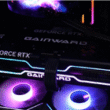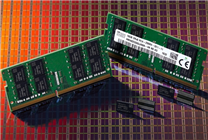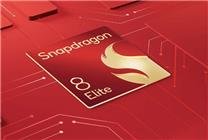### Summary
– A significant memory shortage is impacting major suppliers, leading to a surge in memory prices.
– Samsung and SK Hynix are raising DRAM and NAND flash memory prices by up to 30% to address demand driven by AI needs.
– The price of consumer memory products has more than doubled since last year, highlighting the intensity of the memory shortage.
—
As of October 23, a significant memory shortage has emerged, with implications that may last longer and be more intense than previous market cycles. This shortage is primarily driven by increased demand for artificial intelligence (AI) technology, which is prompting major memory suppliers, including Samsung Electronics and SK Hynix, to adjust their pricing strategies.
### Rising Prices Amid Increased Demand
In the fourth quarter of this year, major chip manufacturers are projected to increase prices of Dynamic Random-Access Memory (DRAM) and NAND flash memory by as much as 30%. This price hike is a response to heightened demand for AI-driven memory solutions and is focused on enhancing profitability, particularly concerning the latest generation of High Bandwidth Memory (HBM).
The ongoing transition of major chip manufacturers toward AI acceleration chips has created an imbalance in the supply-demand equation for traditional DRAM memory, which is commonly utilized in mobile devices, laptops, and servers. As manufacturers allocate more resources to HBM memory, the supply of general-purpose DRAM has not kept pace with market needs, leading to a critical supply shortage.
### Market Reactions and Price Trends
Recent data indicates a significant uptick in market activity, with many manufacturers experiencing an influx of orders and urgent replenishments. This rush in the marketplace has resulted in a dramatic increase in DRAM prices, with reports showing that spot prices nearly tripled year-on-year as of September—far surpassing the more modest single-digit increases seen in the earlier months of the year.
The price escalation is evident for consumers as well. For instance, a DDR4 16GB memory (8GBx2) set, which was purchased for 237 yuan in 2022, has risen to 489 yuan—an increase of over 100%. This spike in memory prices has drawn comparisons to precious metals, such as gold, signaling the urgency and severity of the current market landscape.
### Future Outlook
In light of ongoing developments, it is anticipated that memory prices will retain an upward trajectory in the short term. With continued demand for AI applications, the situation is expected to remain tense as manufacturers strive to meet market needs while balancing production capabilities.
The memory industry is at a crossroads, with rising costs and increased demand creating a new normal for both manufacturers and consumers alike. Stakeholders should remain vigilant as this unprecedented shift could have long-lasting effects across various sectors that rely on these essential components.
—
This article captures an ongoing narrative of a significant shift within the memory supply market, influenced heavily by the demand for AI technologies. The implications of this shortage are widespread, affecting everything from manufacturing costs to consumer pricing. As the landscape evolves, it remains crucial for industry participants to adapt and respond proactively to these challenges.






